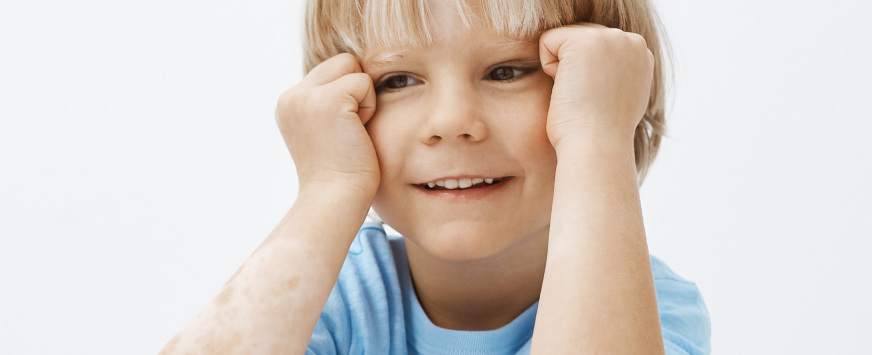Key features
Patches of Depigmented Skin
The main symptom is the appearance of white patches. These can develop anywhere but are commonly found on sun-exposed areas, such as the face, hands, and arms, as well as around body openings like the mouth and eyes.
Hair and eye involvement
Besides the skin, vitiligo can cause the hair (including eyebrows) to turn white or gray. Rarely, the color of the eyes may change.
Symmetrical patterns
Often, if a patch appears on one side of the body, a similar patch might develop on the opposite side.
Emotional impact
Children may feel self-conscious or upset about the appearance of the patches, leading to lowered self-esteem or emotional distress. Encouraging a supportive environment is crucial.
Variable progression
Some children may quickly develop more patches, while in others, the progression is slow. Occasionally, the patches might regain color.



